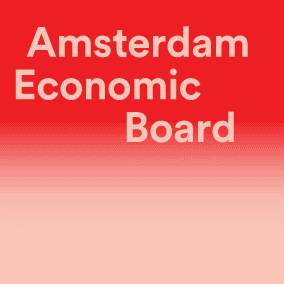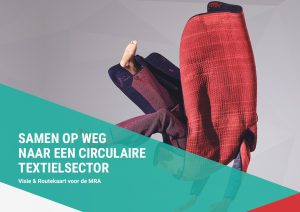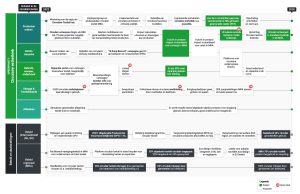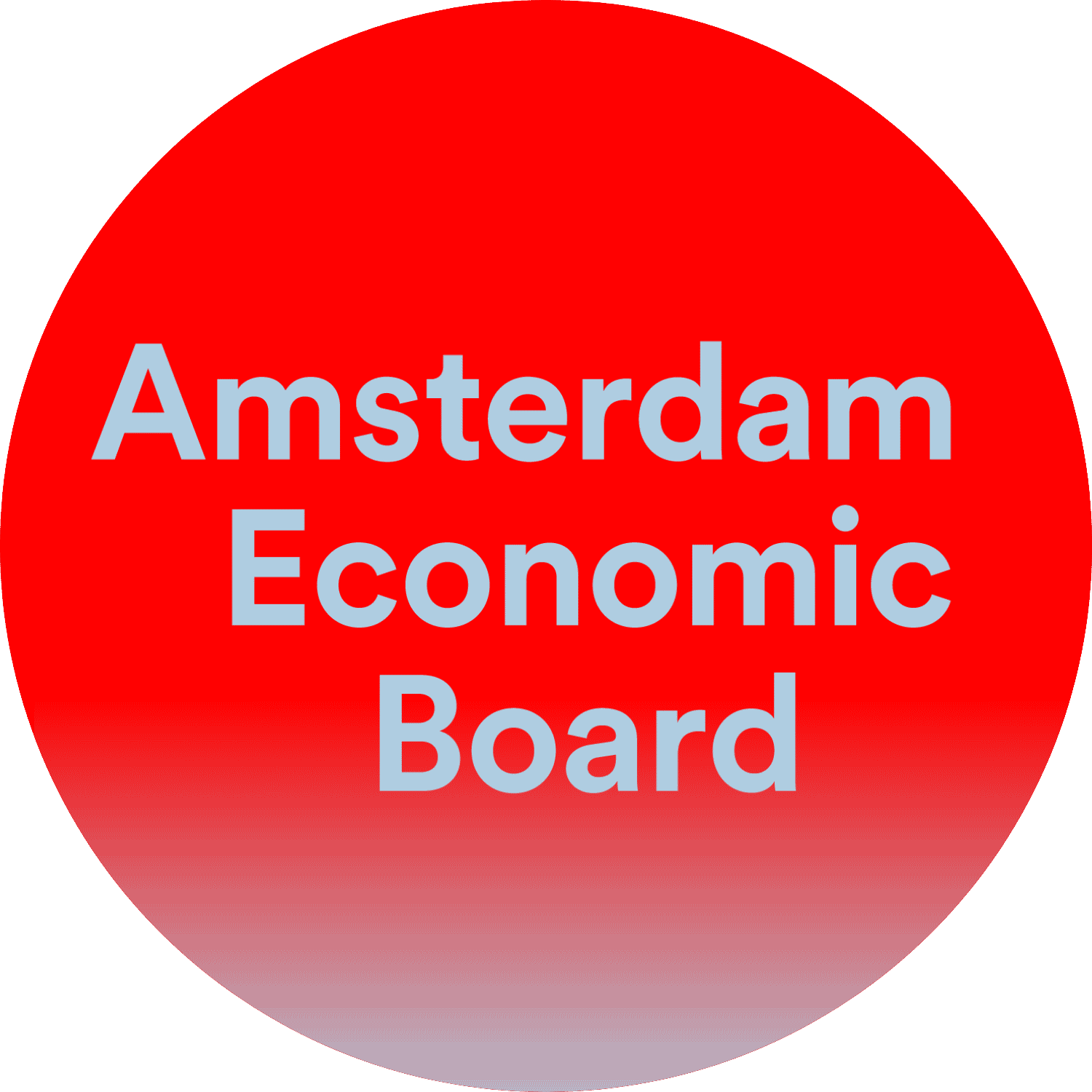Amsterdam metropolis takes a pioneering role in circular textiles
The Amsterdam Metropolitan Area as a frontrunner in a fundamentally different, circular textile sector: that is the ambition of a large network of companies, governments and knowledge institutions from the region. Inspiring circular aesthetics and significant upscaling of recycling are the spearheads of the new vision. A conversation with co-initiators Bart Kruijssen (PwC) and Claire Teurlings (Amsterdam Economic Board). “I hope that companies will take a good look at their business models based on intrinsic motivation.”
The Amsterdam Metropolitan Area is a leading region in the field of textiles and fashion. About a quarter of the Dutch textile industry has its home here and together these companies provide about 10,000 direct and another 10,000 indirect jobs. But the sector also has a downside: there is social abuse in the textile chain and the sector is in the top 3 of most polluting sectors in the world. The main reasons for this are CO2 emissions, water consumption and -pollution and waste production. In our region alone, about 36 million kilos of textiles are discarded every year, two-thirds of which ends up in residual waste.
In recent months, participants in the Green Deal Circular Textiles have been working on a radically new vision for the future of this versatile sector, initiated by the Amsterdam Economic Board, the Municipality of Amsterdam and the MRA Bureau. In various sessions, companies, governments and knowledge institutions discussed this vision, including in the PwC Experience Center. The ambitious goal: by 2030, the textile sector in the region will be 70 percent circular, with the aim of becoming fully circular as soon as possible.
Click on the image and read: Together towards a circular textile sector
Vision & Roadmap for the MRA (in Dutch)
“But even more important than this figure is that we are bringing about a fundamental change in the textile industry,” says Claire Teurlings, Lead Circular Economy at the Amsterdam Economic Board. “With linear textiles we cause too much damage on all fronts, that has to change radically.” “And for such a fundamental change you have to create mass,” adds Bart Kruijssen, partner at PwC. “Of course, small initiatives are needed to see what works and what doesn’t. Fortunately, we already see a lot of them in the region. But we also need to scale up, and to do that in a well-considered way, we need this vision and roadmap.”
Amsterdam alderman Marieke van Doorninck received the vision and roadmap during the REFLOW Circular Textile Festival on 19 april in Pakhuis de Zwijger.
Circular aesthetics and high-quality recycling
In their vision, the initiators focus on two spearheads: circular aesthetics and scaling up high-quality recycling. The first spearhead is to change the image of fashion and textiles, for example by setting up a platform that disseminates an inspiring, circular fashion image. Teurlings: “We have many frontrunners in circular fashion here in the region and we see that a different kind of fashion, a different kind of design language is emerging there. We want to inspire consumers, designers and the industry on the platform, but also share very practical knowledge about, for example, a circular supply chain.”
High-quality recycling also turned out to be an important theme in the first discussions about the vision. “That struck a chord with me,” says Kruissen. “I live in Amsterdam South and see how much we all consume and throw away. We can really take big steps towards better collection.” This starts with awareness among consumers: many people think that you can only put good clothes in the textile bins, while almost all pieces of textile are allowed in — only heavily soiled textiles are not.
High-quality recycling is also about improving the processes after collection, so that discarded textiles are reused for textiles and clothing. Teurlings: “Wasted textiles still often go back to Asia, but to make the chain circular, we also have to do this regionally.” We are already working hard on that. For example, Wieland Textiles developed the Fibersort for sorting textiles and the Fiber Farms of Textiles2Textiles cut all types of textile into post-consumer clippings, small pieces of textile sorted by color and material that are suitable for fiberization, for example.
The point is that we collect more recyclable textiles regionally, explains Kruijssen. “Re-use is of course best, but the reality is that we can’t bring everything to Vinted or fix it. If we have more textiles suitable for recycling, the cost price of recycled material will decrease and demand may increase.”
Further digitization plays an important role in both spearheads. “For example, data is needed to get a precise picture of the challenge, but also to promote transparency in the chain,” says Teurlings. “But digitization also plays an important role in the design. For example, The Fabricants designs digital couture, clothing that you can wear in the digital world without the use of a single piece of textile.”
Missionary work
The textile companies that contributed to the vision and roadmap are the innovative frontrunners from the region, especially start-ups and scale-ups, but also regional governments and research and educational institutions. “We are going to support niche players in scaling up small initiatives,” says Teurlings. “It is more difficult for the larger clothing producers to immediately change course. They often do pilots on sustainable textiles, such as H&M with its circular collection and collection boxes for discarded clothing. But fundamental changes in business models are lagging behind.”
“So there is still some missionary work there,” says Kruijssen. “Many of those larger parties are or could be our customers and that is precisely why we have joined this initiative. Our mission is to contribute to sustainable progress for customers and in society, and we believe it is done by bringing companies and institutions together. In addition, we advise our clients on their ESG objectives and on associated new business models and their financing.”
Network management
As a transition broker, the Amsterdam Economic Board chairs the steering committee that represents the network around circular textiles in the Amsterdam Metropolitan Area. Network management is the starting point: it is a new structure that has been formalized specifically for the situation, in which everyone fulfills a role and responsibility in the network that has been agreed in advance – and later more precisely filled in and possibly adjusted – that contributes to the transition.
In addition to the vision with the two spearheads, the network also formulated a provisional roadmap. It provides an overview of current and planned initiatives, policies, objectives and preconditions for a circular textile sector. In the coming period, the participating parties will continue with the various sub-initiatives. Teurlings: “Financing is needed to take this further, but also a model to bring all those separate initiatives together in order to make the entire chain circular.”
Click on the image and check the MRA Textile Roadmap (in Dutch)
Intrinsic motivation
“The approach chosen here can be an important example for the circular economy as a whole”, expects Kruijssen. “Not only because it is such a polluting industry, but also because textiles are largely a consumer industry. You make a large group of people aware of the challenges and those consumers will also demand more from other industries. But I actually hope that companies will not wait for pressure from consumers or stricter regulations, but will take a good look at the sustainability of their business models based on their responsibility and intrinsic motivation.”
Do you also want to be part of the group of frontrunners on the road to circular textiles? You are more than welcome to join in with your initiative, connections and network, financing (demand), resources and knowledge. Please contact Claire Teurlings at c.teurlings@amecboard.com
22 April 2022
Read more about
Contact us
Want to keep up to date?
Get the best regional news and events (in Dutch) via the Board Update newsletter
Share this news
Want to keep informed?
Follow us daily on LinkedIn and sign up for the Board Update newsletter.
Read more
- What AI applications are we already deploying for healthcare and wellbeing? What ...
- Adyen is one of the great success stories of Amsterdam’s tech ...
- Together with enthusiastic partners in three coalitions, the Amsterdam Economic Board is ...



